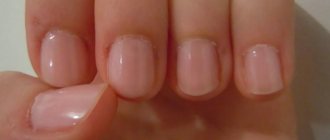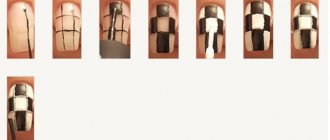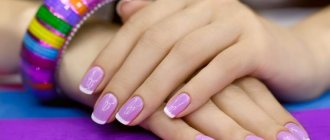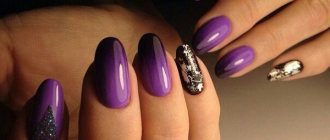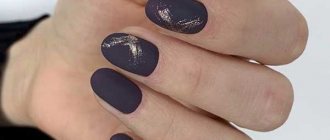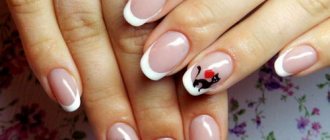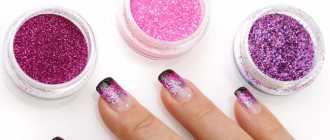European manicure is a safe manicure. This hand care technique is actively used in Europe, and in our country it is only gaining popularity.
You can do a good manicure yourself at home. Many women are sure that a high-quality manicure means steaming your hands in a bowl of water for half an hour, and then cutting the cuticles with injuries and cuts.
But such a procedure can be pleasant if you use the European manicure technique. Often ladies do not follow the development of the salon industry and are not aware of new products. They do not understand that they are missing out on their chance to look more impressive and beautiful with a new type of manicure that is restorative and completely painless.
How does European manicure differ from classic manicure?
The technology of European manicure consists in the use of special tools and medicinal mixtures. Answering the question: how does European manicure differ from classic manicure, it should be said that classic is a trimming process using nippers and scissors, and European is an unedged manicure.
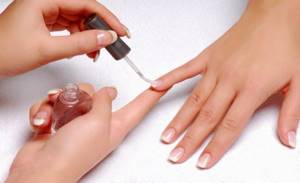
To file the nail plate, a file with special fine chips sprayed using innovative technology is used, and to remove the cuticle, a special liquid product is used - “removal” or “remover”. A wooden stick with a delicate texture is suitable for peeling away the delicate skin.
European manicure is a pleasant procedure, during which a woman will not wince in pain when cutting her skin, as in the usual process, but will enjoy and have fun.
Differences from other types of manicure
Let's summarize how classic manicure differs from the European look. The main difference between French manicure and other techniques is its safety. The skin is not harmed, it is not cut with sharp instruments, so there are no bruises or small cracks.
Thanks to the European style, the risk of getting a disease is minimized, since infections practically do not penetrate into intact skin. Cuticle softeners contain ingredients that slow down the growth of the cuticle, and in the case of the classic technique, the cuticle begins to grow faster and becomes stiffer.
Products for European manicure
European care is suitable for absolutely all women!
Important: If nature has endowed you with a dense cuticle, then be patient to get it in order. You will have to go through several consecutive sessions. As a result, you will be able to enjoy your beautiful hands!
You can hear talk among women that you can remove delicate skin with a laser file, and this is included in this type of care. This opinion is considered erroneous. A laser file does not cause injury to the skin, but it can damage the thin cuticle. Therefore, only rough skin on the fingers is processed with this tool, but the cuticle is not touched.
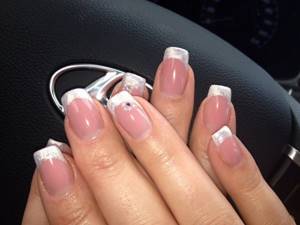
Rough tissue appears around the nail plate after classic trimmed manicure. First, treating one finger with a special nail file will take up to 5 minutes. If you regularly take care of your hands, then you will spend much less time on this procedure.
Important: Do not forget to clean the file after use with a brush.
A liquid for European manicure, such as a remover, must be included in a European manicure set. Many ladies do not use it, fearing the ingredients.
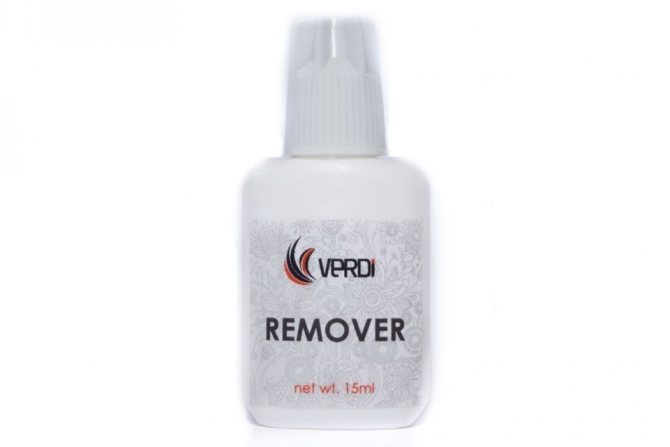
Important: The remover contains fruit acids, which help soften and quickly remove the cuticle. If you do not use this remover, then the technology of European manicure will be disrupted. You will have to use regular wire cutters to trim the thin skin.
Duration of effect
You can make the most unedged manicure with a simple design at home in 1 hour. More complex painting, laying out rhinestones or sculpting will take, accordingly, more time.
If a manicure is done correctly and efficiently, it can retain its attractive appearance for up to 5–7 days. After this, you will need to repeat the procedure. Girls with thick skin and rough cuticles will have to use scissors at first to get the perfect result. Gradually this need will disappear.
It will be enough to treat the nail folds with remover and remove the skin.
European manicure: step-by-step technology
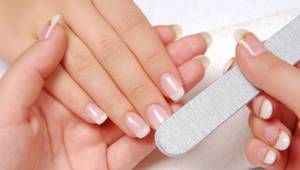
A European manicure begins with hand disinfection and site preparation. The step-by-step execution technology consists of the following stages:
1. Remove old varnish using acetone-free liquid
2. Using a laser file, give the nail plate the correct shape
3. Apply a thin layer of remover to the cuticle. Tissue breakdown occurs
4. Place your hands in a bowl of warm water
5. Remove the skin using a wooden stick. Make movements from the center to the edges
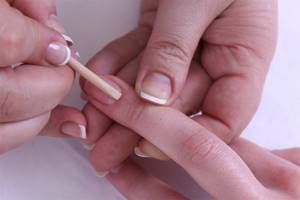
Important: At this stage, do not apply force so as not to damage the dense tissue of the nail.
6. Remove the substance with a cotton pad soaked in water
7. Treat the skin and cuticles with oil to nourish
8. Treat the nail plate with polisher

9. Apply a nail mixture based on special hardeners. It will help restore fragile nail tissues
10. Now design as you like
By using this type of manicure, the polish will last longer, and your hands will be beautiful and attractive.
Step-by-step description of the procedure with photos
The technology for performing European care requires that the skin of the hands be dry. If you prefer a wet or machine manicure, then do not forget to thoroughly dry your hands after baths with a dry cotton napkin. Wait 10 minutes after this so that the beneficial substances are absorbed as much as possible. Then we proceed to perform an unedged manicure, the technology of which we will consider step by step.
Preparing the nail plate
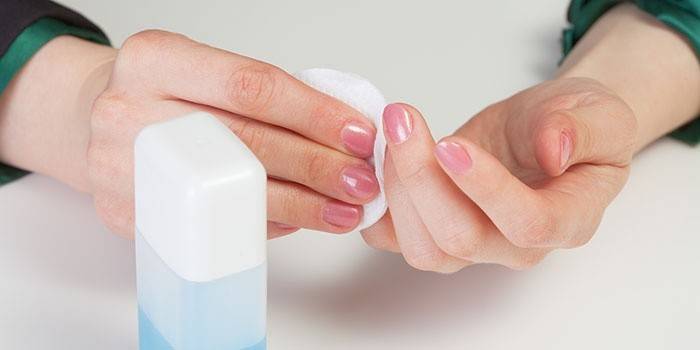
Experts recommend performing the preparatory stage a couple of hours before the manicure, so that the nails have time to “rest” and recover. The old varnish coating must be removed. To do this, use a fortified nail polish remover that does not contain acetone and sponges.
Removing shellac nail coating requires special attention. Pre-prepare 10 sponges, 10 squares of foil and nail polish remover containing acetone for processing. Moisten a cotton pad generously, press it tightly to the nail, and wrap it with foil as in the photo above. Leave for 10 – 15 minutes. Remove the sponges and remove the foil. Carefully pry off the peeling coating with a wooden stick. Remove any residue on the nails with a liquid without acetone.
Softening and removing cuticles

A pleasant aromatherapy procedure can be carried out not only by following European care technology, but also daily: the skin around the nails will be tender and the plate will be white. Using a pencil, apply a thin layer of oil to the cuticle and leave for a couple of minutes. Then rub in with soft circular movements, thoroughly lubricating the nail hole and the skin around it.
The cuticle removal technology is as follows:
- Apply cuticle remover gel around the nail plate so that the nail “smiles” at you, as in the photo.

- Leave for 45-60 seconds. During this time, the product, which contains fruit acids and plant extracts, will soften the skin.
- Wipe gently with a paper towel.
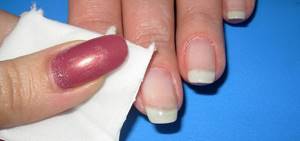
- Use an orange stick to remove excess cuticle and push back the skin, revealing the hole and giving it shape.
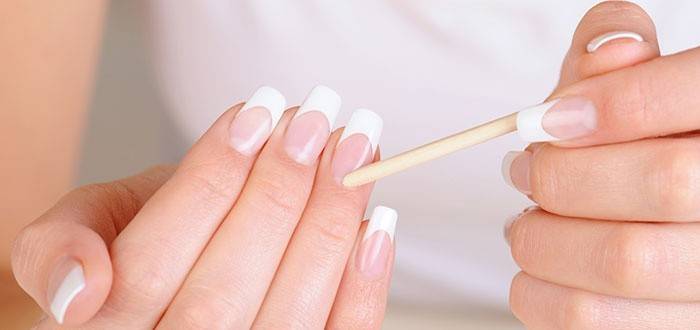
- If you prefer to perform a hardware European manicure, use a special brush attachment.
- How to cook delicious pork
- Beer snacks: homemade recipes
- Inhalations with Lazolvan
Giving the nail the required length and shape
Give the nail plate the desired shape using a nail file. To remove hangnails and rough skin, use a special cuticle file or select a suitable device attachment, as in the photo. A sanding file and a special buff will help remove irregularities, grooves, and polish the surface. Then, with soap that matches your skin's pH, wash your hands and dry with a tissue.

Moisturizing and nourishing the skin
The technology for caring for delicate skin of the hands after adjusting the cuticle is to moisturize, nourish and restore the beauty of the hands. Applying creams rich in vitamins and antioxidants helps maintain youth and beauty. To get results, do not forget about daily aromatherapy with oils.

Application of base and decorative coating
To ensure that the varnish lays down in an even layer and lasts for a long time, apply a base coat to the polished nails. The latter contains vitamins that saturate the plates with microelements, and protectors that protect against the harmful effects of the chemical components of the varnish. Using gentle, graceful movements of the brush along the nail plate, apply a thin layer of varnish. Carefully outline the entire hole so that there are no areas left uncovered with a decorative layer of varnish.

Aerosol drying
The final stage of a European manicure will be aerosol drying. The coating technology is as follows: at a distance of 15 cm from the varnished nails, spray the liquid directionally using a spray bottle. Rich in Si, coral and seaweed extract, it will not only speed up the drying process of the polish, but also protect your nails from damage, strengthening them.
European manicure at home

Any woman wants to make her hands look spectacular on her own, because there is no need to make an appointment with a specialist and then rush to the procedure. European manicure at home can be done during the day or in the evening, when you have a free minute.
Important: Prepare a separate table for this procedure so that you can sit comfortably. Lay out all the tools and supplies, turn on some light music and start leaving.
You can get together with your girlfriends and have pleasant conversations about life. This will help you take your mind off daily problems. Such relaxation, enjoying a pleasant atmosphere and a manicure session will bring a lot of positive emotions.
What you need for a manicure
European manicure is, first of all, equipping the home procedure with special accessories and required products.
The kit for the upcoming session should include the following set of tools and related components:
- Hand towel. This attribute will bring maximum benefit if it is made from natural cotton fabric and has excellent hygroscopicity (the ability to give up and absorb moisture) of the fiber. Disposable paper napkins are also suitable for these purposes; although they are consumed in increased quantities, they are recognized as being as hygienic as possible.
- Water reservoir. The container should be chosen in such a way that your hand can easily fit into it.
- Cotton pads/swabs, as well as nail polish remover. The choice of the necessary liquid compositions (with or without ammonia) depends on the specific type of coating - with regular or gel polish.
- Orange sticks. This item, made from the tree of the same name, has antiseptic properties and is intended for one-time use. Each stick is made sharp on one side, designed to clean the space under the nail plates, and beveled on the other, to remove the cuticle after it has softened.
- (a manicure spatula made in the shape of a hatchet or spear) or a scraper will serve similar purposes instead of orange sticks Which tool to give preference needs to be decided individually. High-quality pushers, made of medical steel, do not slip in the hand during operation, but require careful handling, since sharp blades can damage the nail plate. Plastic varieties of such devices are considered short-lived, and therefore are not popular with manicurists. At home, at first it is still safer to use wooden objects.
- File or polishing buff . This accessory, most often made in the shape of a polyhedron, is covered with a special natural or artificial material with a high degree of abrasiveness (hardness). This tool is designed to prepare the nail for applying varnish - grinding and smoothing out existing irregularities in the plate. You should not overuse the file; using it 1-2 times a month is quite enough.
- Cuticle oil. You can purchase a similar composition at the pharmacy, giving preference to such saturated substances as, for example, peach, tea tree product, shea, and other components. The product is used at the final stage to remove the cuticle. When choosing removers or keratolics, it is recommended to pay attention to components that contain: vitamin E, lactic and fruit acids.
- Base. The substance is represented by a thick rubber mass, which serves to level the plate before it is directly painted with gel polish, improves adhesive (“sticking”) abilities with the nail, and serves as a prevention of chipping.
- Primer. The role of this component lies in the translation of the term from English and means the word “primer”. The product performs a function almost similar to the base, but has fundamental differences - the substance does not create an independent layer, is intended for degreasing and drying the nail plate, acts as a kind of adhesive tape, providing “adhesion” between the artificial material and the nail. An updated version of a slightly soft-touch nail coating with a translucent satin effect is a matte or glossy top coat.
- Pumice. This is a universal tool in the unedged technique, created from natural material. It is advisable to choose a product with rounded ends and small cells.
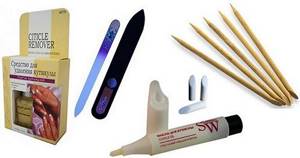
European manicure means well-groomed hands with soft, velvety skin and perfectly manicured nails. At the final stage, you should definitely use a high-quality hand cream.
This standard product, necessary to smooth out the feeling of dry skin, performs another important function - it acts as an epidermal (lipid) barrier, effectively solving many skin problems.
European hardware manicure
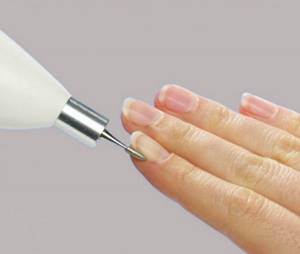
European and hardware hand care are two different types. Often ladies come to the master to get a manicure, like European women.
But their hands are very neglected, then the specialist suggests saving some stages of the technology of one and applying certain stages of another type of care. This cannot be avoided when a woman has imperfections on her nails: fine ribbing is visible, the nail is peeling and covered with micro damage.
Important: Contact a specialist who can easily use a manicure device. After all, if you mishandle the attachments, you can damage the nail plate.
Use a technical device if you need to perform additional procedures: correct the shape or level the surface. To correct other imperfections, use a modern European manicure - safe for the skin and nails.
Reviews
Margo: I went for a trim manicure several times, and at home I did a European manicure every 4-5 days. Now there is no need to visit a trimmer at all - my nails are in excellent condition!
Sveta: I do manicures at the salon, but when I don’t have time I have to do it myself. The process is simple and... What’s most important for me is that it doesn’t take much time, so you’ll have time everywhere and have beautiful fingers.
Antonina: I don’t understand why this European manicure is so safe. Isn’t a product that corrodes the cuticle dangerous? I wouldn’t put this on myself, it’s better to find a good specialist and go for a trim manicure and get an excellent result.
European combined manicure
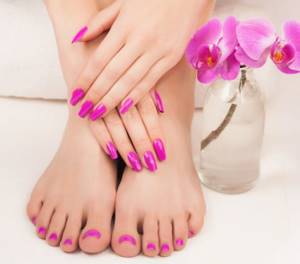
- This type of manicure care is also called mixed. It will be offered to a woman if it is impossible to do only a European manicure and she needs to remove some defect with the help of nippers. Thin and dry skin is not cut, and burrs will have to be removed using a metal tool
- This combination can be made using the “wet” or “dry” method. At the end of the mixed manicure, nail design is performed. European combined manicure is an individual approach and maximum efficiency
European unedged manicure
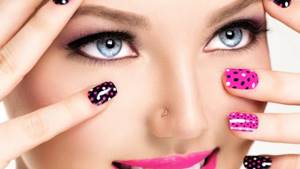
Like any process, this type of care has its pros and cons. In our country, a European unedged manicure can completely replace classic care. In Europe, women use only this type of safe procedure to treat the nail plate and skin of the fingers. All the ladies who constantly use it to care for their hands note the following advantages:
- bloodless processing technique eliminates the possibility of fungal infection
- gentle effect on the skin - painless process and absence of cuts and other injuries
- owners with delicate skin can independently perform such care every three days
- If you carry out untrimmed procedures, the growth of the cuticle slows down, so your nails will remain well-groomed and beautiful for a long time
Disadvantages of European manicure:
- the first effect will appear after the first session, and the result can be consolidated only after several procedures
- Ladies with delicate skin may experience a burning sensation after treating the cuticle with a special product

Important: If irritation appears on your fingers after this procedure, then you should postpone using this type of care for a while. You will have to make hand baths and lubricate the skin with a soothing cream. After some time, you can resume the procedure.
- This manicure option is not suitable for ladies with extended nails
Definition and Benefits
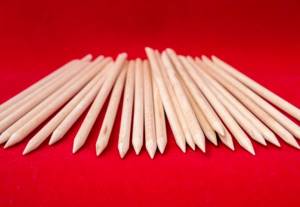
Unedged or European manicure is the safest technique for treating nails and cuticles, which does not use cutting tools. In this case, the cuticle is simply pushed back using an orange stick.
Advantages:
- safety . During an unedged manicure, no cutting tools are used, which eliminates the possibility of cuts, wounds, and also reduces the risk of infections;
- painlessness . The European method does not involve any cutting or grinding, so it rarely causes discomfort;
- prolonged action . When the cuticle is removed regularly using the European method, it grows much slower, and the manicure procedure goes faster each time;
- economy . For the procedure you do not have to buy an expensive milling cutter or sharp wire cutters.
Flaws:
- obvious results only after 3-5 procedures . Prolongation in this case is both an advantage and a disadvantage. To get the perfect manicure using European technology, you will have to wait until your hands get used to the new method.
It is important to understand that a fairly gentle method may not be suitable for women with hard cuticles, since it is quite difficult to soften them. In this case, it is better to pay attention to hardware manicure - it is also considered safe, but it is important to find a professional manicure.
We talked about using an orange stick here.
European manicure and pedicure
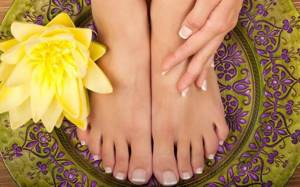
- It is important for every woman to keep her hands youthful, because they show age. Many people argue that it is difficult to determine age from the hands of European women, since they know how to take care of themselves. It is high-quality European manicure and pedicure that allows a lady not to have complexes and not be embarrassed about her appearance
- Many girls deny themselves the pleasure of going to the salon and getting their hands in order because of the trimming process in manicure. After all, you can become infected with something if the master performs trimming procedures with the same tools on all clients. Nowadays, every lady can safely visit a beauty salon, get a European manicure and enjoy her attractiveness and beauty.
Advantages of the unedged method
- Safe and painless. This is very important for many clients and clients. By switching to the unedged look, you will forget about cracking and swelling of the cuticle, microtraumas during the session.
- Saves time: when cuticle growth has already stopped and European manicure is done regularly.
- Hands look amazingly soft and young due to constant care.
- The varnish lasts the longest. This is a “dry” type of processing. With a European manicure, the skin does not get wet and the nail does not absorb moisture and does not experience deformation, so the varnish does not peel off for a long time.
European cut manicure
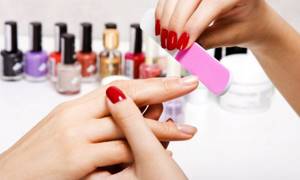
- As mentioned above, there is a European edged manicure. In other words, it is called combined or mixed. This type of care is used when it is necessary to get rid of hangnails. They are cut using wire cutters. At other stages, cutting metal tools are not used
- To keep your manicure fresh for a long time, you should take care of your hands more carefully, using baths, hand masks and creams. These products will help get rid of hangnails, which means your manicure will be fresh and beautiful for a long time.
Cuticle and hand skin care
To maintain your manicure in perfect condition, you need to take care of your hand skin after the procedure. To do this, pharmacies or stores sell oils or gels to slow down cuticle growth. They allow you to keep your fingers and nails looking well-groomed for as long as possible.
In addition, experts recommend:
- Do all housework wearing thick rubber gloves;
- Avoid skin contact with irritants;
- Use softening oils and wax;
- Avoid drying and freezing your hands in winter.
The tips of your fingers can be lubricated daily with castor, peach or almond oil. A few drops are applied to the skin and massaged for 1-2 minutes.
Pumice for European manicure
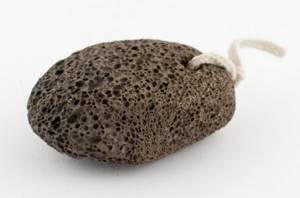
- Pumice is a natural material. Such porous volcanic glass is formed after the release of gases during the solidification of lava (acidic and medium)
- Pumice is great for European manicure, because the main feature of such care is the use of natural materials
- Manicure with pumice can be used by women who are allergic to chemicals.
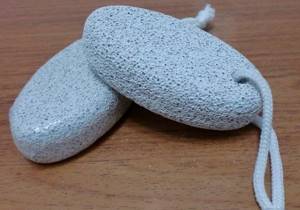
Important: Pumice stone should be in the bathroom of every woman who wants to fight age-related external changes and roughening of the skin of the hands or feet. Manicure with this material is distinguished by its delicacy and naturalness.
Which manicure is better: edged or unedged?
The answer to this question lies on the physiological plane - the untrimmed technique is suitable for owners of delicate, thin skin without rough, rapidly growing areas of the cuticle, which can only be removed in the classical way using scissors and forceps.

Each of the methods - traditional or European - has both advantages and certain disadvantages. When choosing one of the techniques, the health and beauty of the nails is of paramount importance, so on this issue it is worth seeking comprehensive advice from a professional cosmetologist.
Hot European manicure

- Hot manicure is an elite manicure that combines increased efficiency and benefits for tissues
- When using this type of care, the skin of your hands and nails will be transformed beyond recognition
- Unique water procedures with medicinal oil and cream help solve the problem of restoring the epidermis after damaging external influences
- A hot European manicure is an excellent hydration and intensive restoration. The concentration of beneficial microelements increases under the influence of high temperature
- This type of care is used by beauties to restore the nail plate after the nail extension procedure. Ideal for dry epidermis. Can be used if there are skin imperfections - cracks, microtraumas and other damage to the epidermis
Types of European manicure
The technique of performing a European manicure can begin in three ways, each of which has its own characteristics.
- Dry European manicure speaks for itself. The cuticle is treated with a softening and removing agent without prior soaking. Therefore, dry manicure is not recommended for brittle and injured nails. The procedure does not take much time and can be performed not only at home, but also, for example, on the road. Take note: after dry treatment, nail polish lasts longer! This is due to the fact that when steamed, the nail plate becomes flat, and after drying, it returns to its original shape, which is why the coating cracks faster.
- The wet version of the European manicure requires mandatory softening and moisturizing of the cuticle in an aqueous environment. Special lotions and oils are added to the hand bath.
- Hot manicure is recommended when working with injured cuticles, brittle and dry nails. The skin is steamed in a lotion (cream) heated to a temperature of 50°C. For these purposes, we recommend that you purchase an electric bath, as in the photo.

European manicure – gel polish
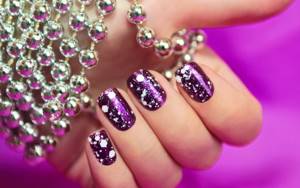
Just recently, women visited beauty salons weekly to get their hands in order. On your own, without certain skills, it was difficult to do the necessary hygiene procedures or draw a design on your nails.
Currently, European manicure is becoming increasingly popular, and gel polish allows every beauty to get a salon manicure at home.
Important: Before applying shellac to your nails after a European manicure, treat the nail plate with a base coat. You need to apply a top coat to colored gel polish - this is important.
After applying all the coatings, you can dry your nails in a UV lamp. A home manicure, just like in a salon, should be done once every two weeks.
Important: Do not forget to degrease it with special means before applying coatings to your nails.
European vs classic: what's the difference?

The classic method involves cutting the cuticle. The peel is also first softened and then removed with nail clippers or scissors with rounded blades. This procedure requires great professionalism and precision.
Remember! With classical technology, any careless movement can lead to injury, and this, in turn, to infection! If you are not sure of your accuracy, entrust the procedure to a professional in the salon.
European technology is considered safer, since the risk of injuring the skin is reduced to an absolute minimum. You can easily do this manicure at home! Do not forget, however, that the cuticle grows for a reason: it performs a protective function, protecting our fingers from the penetration of dangerous bacteria and fungi under the skin. Therefore, if you do not want to risk your health, it is better not to remove it completely, but simply move it away.
Men's European manicure
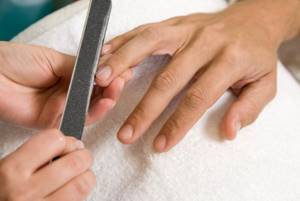
- A modern man is attracted not only by his intelligence and charm, but also by his spectacular appearance. Nowadays, men take care of themselves and get their nails done.
- Men's European manicure is very popular among the stronger sex. They like safe, untrimmed hand care.
- Many young people refuse to polish the nail plate and cover it with a colorless varnish. This is wrong, because with a glossy shine, nails look well-groomed and healthy
Secrets that will help you enjoy a beautiful European manicure longer

Any representative of the fair sex wants the decorative coating to last a long time.
To avoid troubles, you need to remember a few recommendations from nail specialists:
- The greatest durability of the varnish is given by the preliminary application of a base underneath it. A fixative will also help make the coating more durable.
- To avoid peeling of the varnish, apply it in a thin layer. Transparent colored coatings are painted in several layers. But accuracy is important here: subsequent application is possible only on a completely dry first layer.
- The varnish dries completely after 12 hours. Accordingly, it is necessary to apply it during periods when manual work is not expected.
- You can get a perfectly even coating only if you completely remove the old one.
- Polishing tools give your nails a smooth finish. But it is important not to overdo it, as it can ruin them. And the decorative coating will lie unevenly.
- When buying nail polish, pay attention to those that have super-drying properties. Judging by the reviews of fans of European manicure, this coating lasts about seven days on the nails and dries almost instantly.
- The guarantee of excellent results is the presence of artificial proteins in the composition. They make nails stronger and prevent them from splitting.
- The use of low quality files leads to splitting of the nail plate. Buy only devices made from abrasive materials, the effect of which is much softer.
- You can use pumice with a moderately soft surface. It has proven itself well in the fight against hangnails, perfectly smoothes the skin of the nails and fights other imperfections.
- Do not shake tubes of varnish, as this contributes to the formation of bubbles, which subsequently spoil the European manicure.
- Before applying a colored coating, it is not recommended to steam your hands, as this will make the nail plate porous and the varnish will be distributed unevenly.
European manicure photo
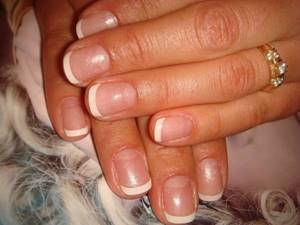
At first, after switching from a classic manicure to a European one, there will be unusual sensations - burning and discomfort.

After a few sessions, the skin will get used to it, and such care will be a joy. Numerous photos will help you see what your hands look like after a European manicure.
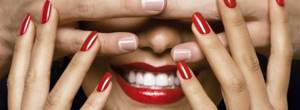
Minuses
But European manicure is not as ideal as we would like:
- Not recommended for girls with rough cuticles.
- Has a delayed effect. This means that the ideal result will not appear immediately, but only after several procedures.
- It is possible to have an allergic reaction to the cuticle remover. That is why it is recommended to carefully read the composition before application.
- European manicure needs to be done constantly. If you only want to do one procedure to evaluate the effect, then there is a high probability that you will be disappointed. This method is ideal for thin, moisturized cuticles that respond well to emollients. If it is too rough, during the first sessions you will have to combine the use of gel and tweezers to achieve an ideal result.
European manicure: tips and reviews
Easy, pleasant, a real helper for a woman - all this is said in reviews about European manicure. The advice of many ladies suggests that all girls should switch to such an unedged manicure, because it is safe care.
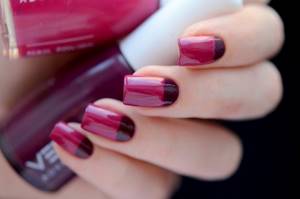
Many women regret that they did not switch to the European manicure technique earlier. After all, constant injury to the cuticle and its cutting does not add health to the nails and skin of the hands. Only careful treatment will help make the nail plate and skin healthy and beautiful.
If you are still in doubt about whether to give up classic care or not, do just one session of a European manicure and all doubts will immediately disappear. Feel the pleasant sensations and appreciate the excellent guaranteed results!
Advantages and disadvantages
Unedged European manicure has a number of significant advantages :
- the chances of injuring the skin and causing infection are minimal (the main advantage for those who value safety!);
- painlessness of the process: the effect is very gentle - even those with weak nails and sensitive skin will not feel anything;
- ease of execution (suitable even for beginners);
- If you do the procedure regularly, over time the cuticle grows noticeably slower.
However, this technology has disadvantages that also cannot be ignored:
- unlike classic manicure, European is not suitable for extended nails;
- the procedure is ineffective for those with very rough cuticles;
- the skin grows back faster than with the pruning method;
- Before the untrimmed procedure, it is necessary to conduct a test for individual intolerance to softening agents, since some compounds can cause allergies.


